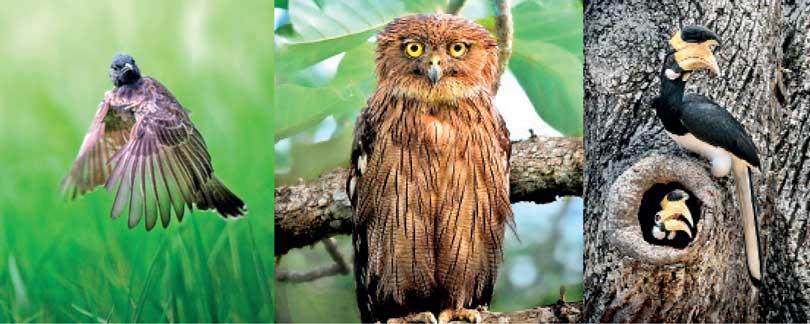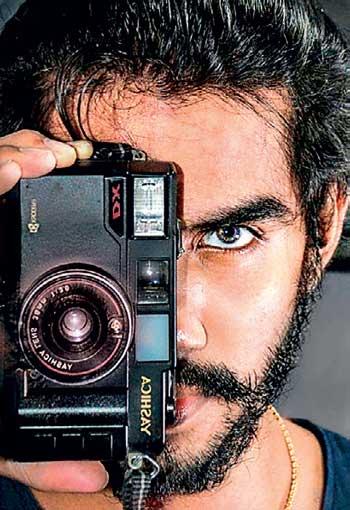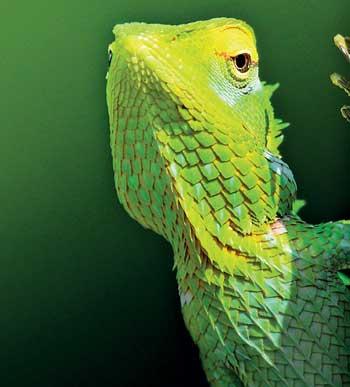
 In 2022, we’re engaged in an image-based society, where we may connect with photos of different forms continually. Images that may have formerly been restricted to a gallery or museum display, a picture book, or a magazine are now mostly viewed online and through Instagram, Tumblr, Twitter, and other social media platforms. Within this background, since the venues where images may be shown and shared are continually evolving—and becoming more digital—photographers of a new generation are finding that creative adaptability is one of their greatest assets. Daily Mirror sat down with Bhanuka Kaluarachchi, 20 years old, a Wildlife photographer with 478.1k likes and 32.4k followers on Instagram and 33.7k followers and 494.1k likes on Tiktok, to trace down his exciting and inventive wildlife photography journey.
In 2022, we’re engaged in an image-based society, where we may connect with photos of different forms continually. Images that may have formerly been restricted to a gallery or museum display, a picture book, or a magazine are now mostly viewed online and through Instagram, Tumblr, Twitter, and other social media platforms. Within this background, since the venues where images may be shown and shared are continually evolving—and becoming more digital—photographers of a new generation are finding that creative adaptability is one of their greatest assets. Daily Mirror sat down with Bhanuka Kaluarachchi, 20 years old, a Wildlife photographer with 478.1k likes and 32.4k followers on Instagram and 33.7k followers and 494.1k likes on Tiktok, to trace down his exciting and inventive wildlife photography journey.
 Q What inspired you to become a photographer, and when did you start photography?
Q What inspired you to become a photographer, and when did you start photography?
I have had a keen interest in animals and their behaviours since I was a kid. Sometimes, I have waited hours and hours watching animals. I always had thought of sharing the beauty of those animals with others. Then I saw a photo of a lizard, which gave me goosebumps, so I searched for the owner of that photo. And it was Ravisara who captured that amazing shot. Actually, it was my first inspiration to be a wildlife photographer. Then, I researched more about this area of arts and started photographing animals on my phone. I always needed to add more aesthetic value to my photos, following international-level wildlife photographers. Then my parents understood my skill, and they brought me a camera. Thankful to them, I started my wildlife journey back in 2021.
Q Do you remember your first shot? What was it?
Of course, I can remember. It was the first shot I captured from my camera. It was a baby land monitor. That shot was just a try to capture something with my camera without knowing any settings, but today I am delighted to see that I have captured it with the perfect settings even without knowing anything.
Q From where did you learn wildlife photography?
Well, I am a self-learner indeed. I experimented with different camera settings, and honestly, I have failed so much. But, every time I failed, I learned something new. In wildlife photography, we cannot change the subject as we wish. And also, the light conditions and the animal’s behaviour change from frame to frame and surrounding to surrounding. So, we have to change the camera’s settings frequently to create the desired photograph. I developed my skill by experimenting with thousands of such shots. I should respectfully mention Priyantha Bandara and Chandima Lakshan. I learned many things by reading their photos.
Q why did you choose wildlife photography?
I would say it is my addiction to fresh things. We can never see the same behaviour in the same frame under the same light conditions twice in any animal. It is a challenge to capture a pose of an animal along with a perfect background. I love the excitement of waiting for such a photo. And, it is peace to me. That is why I selected wildlife photography.
Q What are the challenges you face as a wildlife photographer?
Wildlife photography is not a bed of roses. It is hard. Including protecting ourselves from wild animals, our equipment from the weather, managing good health, and waiting patiently for a perfect frame, almost everything in wildlife photography is a challenge. Considering the post-production, bringing the desired look and feel to our photo is the greatest challenge.
Q How do you prepare for your projects? Do you picture beforehand in your mind the images you take?
Based on my experiences with animals, I chase animals by their sounds and the alarm calls of other animals in the background.
When I see a perfect frame of any animal, what I do first is be calm. Then I give my hundred percent focus on the requirements to capture the best in that frame. All this preparation happens within a second or a couple of seconds. In most cases, now I can picture the output beforehand if I find any animal in a frame. But frankly, I must say that it is all about practice.
 Q How do animals respond to the camera?
Q How do animals respond to the camera?
That is interesting; in most cases, we reach animals without allowing them to see us. Because wild animals do not usually show any friendly behaviour, some animals, when they see the camera, they just stop and look at the camera. On the other hand, some just attack. Especially, I have taken some shots of monkeys looking at the camera straight, and those faces of monkeys have a great touch of curiosity.
Q How long do you have to wait for one shot?
Well, it depends. Let me share my experience. Once I tried to capture a brown fish owl, and I tracked it for a week. Finally, I found it visits the same place daily around 3 pm. So, I went there silently, but somehow it saw me and flew away. But my instincts told me that he would come again. So, I waited there for one and half hours to take that shot, and finally, I succeeded. I must say that it is one of my favourite shots.

 In 2022, we’re engaged in an image-based society, where we may connect with photos of different forms continually. Images that may have formerly been restricted to a gallery or museum display, a picture book, or a magazine are now mostly viewed online and through Instagram, Tumblr, Twitter, and other social media platforms. Within this background, since the venues where images may be shown and shared are continually evolving—and becoming more digital—photographers of a new generation are finding that creative adaptability is one of their greatest assets. Daily Mirror sat down with Bhanuka Kaluarachchi, 20 years old, a Wildlife photographer with 478.1k likes and 32.4k followers on Instagram and 33.7k followers and 494.1k likes on Tiktok, to trace down his exciting and inventive wildlife photography journey.
In 2022, we’re engaged in an image-based society, where we may connect with photos of different forms continually. Images that may have formerly been restricted to a gallery or museum display, a picture book, or a magazine are now mostly viewed online and through Instagram, Tumblr, Twitter, and other social media platforms. Within this background, since the venues where images may be shown and shared are continually evolving—and becoming more digital—photographers of a new generation are finding that creative adaptability is one of their greatest assets. Daily Mirror sat down with Bhanuka Kaluarachchi, 20 years old, a Wildlife photographer with 478.1k likes and 32.4k followers on Instagram and 33.7k followers and 494.1k likes on Tiktok, to trace down his exciting and inventive wildlife photography journey.  Q What inspired you to become a photographer, and when did you start photography?
Q What inspired you to become a photographer, and when did you start photography? Q How do animals respond to the camera?
Q How do animals respond to the camera?